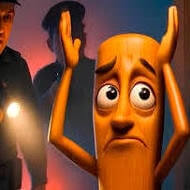Brainrot Analog Horror

Brainrot Analog Horror is an eerie narrative-puzzle game set inside the logic of an old VHS tape. Players control a character trapped between corrupted video segments, using analog clues to escape looping sequences, decode lost messages, and uncover the story buried beneath magnetic noise and fear.
Tape Logic and Time Glitches
The game unfolds inside several interactive tapes. Each one contains distorted footage, jump cuts, and incomplete logic loops. Brainrot Analog Horror tasks you with identifying anomalies, syncing visuals with audio, and navigating static-filled corridors. You’ll constantly switch between live footage and “pause-time” to adjust the environment. Forgetting to rewind at the right moment can lead to a scene reset or reveal hidden footage only visible in reverse playback.
- Segment puzzles requiring correct tape position, time stamp, and frame rate
- Visual codes hidden in static patterns and color shifts
- Audio-based guidance from corrupted voiceovers or reversed whispers
- VHS loops that slightly alter reality each time they play
Entities and Message Fractures
Throughout Brainrot Analog Horror, players are stalked by a glitched figure known only as “The Grain.” It doesn’t appear directly—instead, it manifests as screen warps, input lag, and recurring sounds. Sometimes, the only way to escape it is to fast-forward past its entrance. Fragmented messages left on tapes offer cryptic advice, often conflicting. You must decide which messages to believe, as some tapes lie to preserve themselves.
Hacks and Secret Footage
Unlocking hidden channels allows access to off-record scenes that show the larger mystery. One hack enables frame-by-frame movement, revealing micro-changes that normal play misses. Another unlocks “Channel Zero,” where alternate versions of tapes loop endlessly. Finding and collecting “Magnetic Nodes” lets you patch corrupted segments, giving access to the game’s real ending, only viewable when all tape clocks are synchronized.
Brainrot Analog Horror doesn’t just tell a story—it distorts how stories are told. Progress requires interpreting fear, trusting senses that deceive, and mastering a format that never stops glitching. It’s not just about surviving the footage—it’s about rewriting it.




































































































































